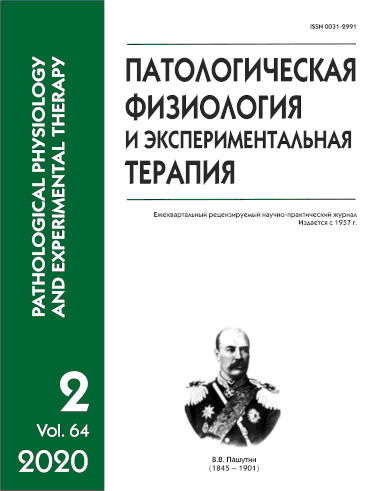Functional and correlational relationship between indexes of the metabolic activity of neutrophils and α-defensins in animals of different age groups in the dynamics of acute somatic pain
Abstract
Microorganism strains resistant to antibiotics have become more common. This fact prompts searching for new means that would provide a reliable antibacterial effect. Studying antimicrobial polypeptides is relevant. A question arises whether α-defensins are activated only during a microbial attack or there are other triggers for their involvement in the immunological process. Since any wound is always painful but acute pain is not always associated with an external injury, the question is whether neutrophils and α-defensins can be involved in the dolorogenic process as such. The aim of the study was to determine correlation and features of neutrophil and α-defensin involvement in an acute dolorogenic process at stages of ontogenesis. Methods. The study was performed on white rats divided into three age groups (30-35-day-old, 2-3-month-old, and older than one year). Each group was divided into control and experimental subgroups. In experimental subgroups, acute somatic pain was modeled by electrostimulation. Material was collected at 2, 30-60, and 120-180 min after electrostimulation. Serum content of α-defensins was measured by enzyme immunoassay. Neutrophil microbicidal activity was evaluated using the spontaneous and stimulated NBT tests. Values were compared using the non-parametric Mann-Whitney U-test, and correlations were analyzed using the Spearman rank correlation test. Results. Acute short-term somatic pain activated oxygen-dependent mechanisms of neutrophil microbicidity and induced increased levels of α-defensins in peripheral blood. This reaction has specific features in ontogenesis but it is obviously standard and short-term. The functional activity of neutrophils was directly correlated with the level of α-defensins in peripheral blood of 30-35-day-old and 2-3-month-old animals. Conclusion. At stages of ontogenesis, oxygen-dependent neutrophil microbicidity and peripheral blood content of α-defensins increase in response to acute, short-term somatic pain. The type of response is determined by age-related features. The study results are important for development of α-defensin-based drugs and prescribing them to patients of different age with a history of acute pain.






